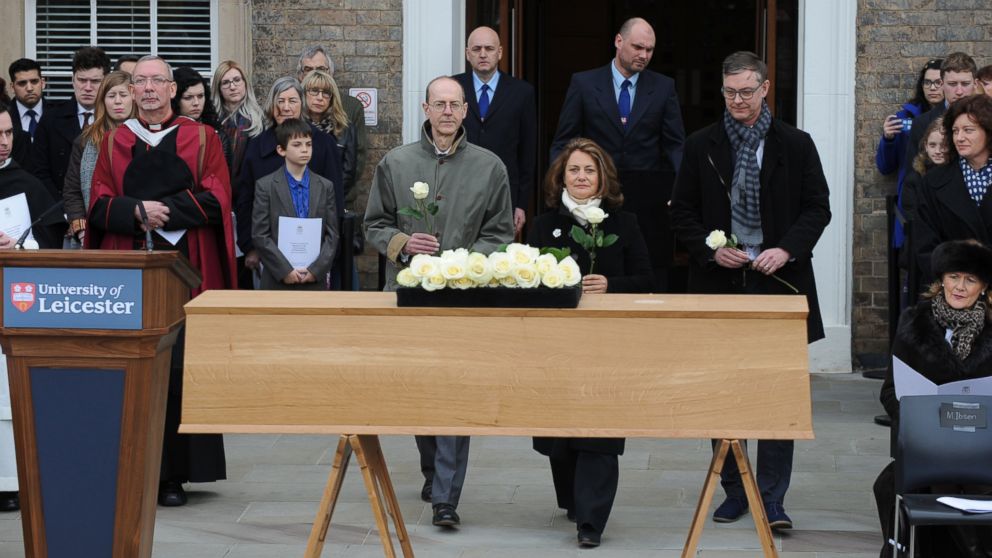Ceremonies Are Underway in Honor of King Richard III Reburial
The remains of Richard III, who died over 500 years ago, were found in 2012.

— -- Thousands of people are traveling to Leicester, England, as ceremonies honoring the reburial of King Richard III begin today. It's the first time since 1952 that the country has buried a monarch.
The remains of the former king--who died in 1485--were found in 2012 under a car parking garage, according to the BBC.
The procession began with a ceremony today at the University of Leicester, the BBC reports, where archaeologists, researchers and descendants of Richard III's family were in attendance.
The cortege is traveling throughout Leicestershire today and is expected to reach Leicester Cathedral later in the day, according to the BBC. The king will be reinterred at the cathedral on Thursday.
Queen Elizabeth reportedly wrote a greeting that will appear at Thursday's service, a spokesperson for the cathedral told the BBC, but the details of the message haven't been released.
The public will be able to view the coffin at the cathedral from Monday to Wednesday, the BBC reported.
According to the official website of the UK monarchy, Richard III "usurped the throne from the young Edward V, who disappeared with his younger brother while under their ambitious uncle's supposed protection.
"Before becoming king, Richard had had a strong power base in the north, and his reliance on northerners during his reign was to increase resentment in the south. Richard concluded a truce with Scotland to reduce his commitments in the north. Nevertheless, resentment against Richard grew.
"On 7 August 1485, Henry Tudor (a direct descendant through his mother Margaret Beaufort, of John of Gaunt, one of Edward III's younger sons) landed at Milford Haven in Wales to claim the throne. On 22 August, in a two-hour battle at Bosworth, Henry's forces (assisted by Lord Stanley's private army of around 7,000 which was deliberately posted so that he could join the winning side) defeated Richard's larger army and Richard was killed."
It's unclear how his remains wound up under the garage, but genetic testing through the maternal DNA of the departed king proved his identity conclusively, according to British press reports.




